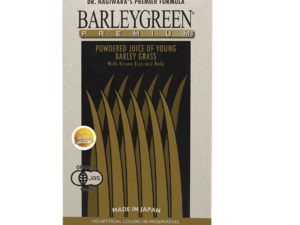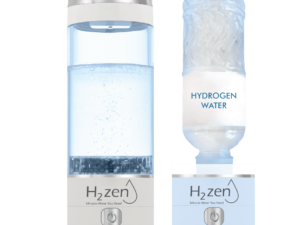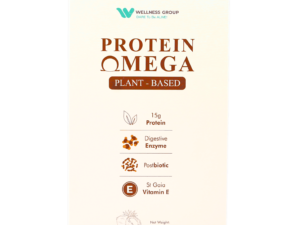Does Hydrogen Water Help Immune System? Expert Views
One surprising trial found that drinking 1.5 L/day of hydrogen-rich water for four weeks changed immune markers and boosted antioxidant capacity in adults aged 30 and older.
The article opens with clear expectations. It explains what readers usually mean by the question and points to human trials and mechanism data. The lead trial showed reduced cell apoptosis, lower CD14+ frequency, and transcript changes that dampen inflammatory signaling.
Readers get a plain summary of how molecular hydrogen dissolves into water and why its small size might let it reach tissues and immune cells. The tone stays friendly and factual, avoiding bold claims.
Practical note: For Malaysia readers, Wellness Group can answer questions via WhatsApp at +60123822655. Business hours are Monday–Friday 9:30 am–6:30 pm and Saturday–Sunday 10 am–5 pm.
Key Takeaways
- Human trials show modest, short-term shifts in antioxidant markers and immune-related genes.
- Molecular hydrogen may reduce oxidative stress and tune inflammatory pathways without replacing care.
- Evidence is promising but preliminary; larger, rigorous studies are needed.
- Practical guidance is available locally from Wellness Group in Malaysia.
- This article will separate clinical findings from early lab work and give realistic expectations.
User Intent: What People Really Mean by “Does hydrogen water help immune system?”
Most queries aim to know if short-term intake produces measurable changes in antioxidant and inflammatory markers. Readers want a concise, evidence-based answer rather than marketing claims.
Key expectations:
- Clear summaries of human studies and endpoints like antioxidant capacity and PBMC apoptosis.
- Practical intake ranges (commonly ~1.5 L/day over four weeks) and delivery options: tablets, generators, or canned solutions.
- Mechanistic context such as changes to TLR–NF-κB signaling that relate to oxidative stress and inflammation.
People also expect transparency about limits: small sample sizes, mixed performance data, and the need for replication. Practical advice ties use into sleep, nutrition, and exercise instead of treating it as a cure.
Local help: For personalized guidance in Malaysia, contact Wellness Group via WhatsApp at +60123822655 (Mon–Fri 9:30 am–6:30 pm; Sat–Sun 10 am–5 pm).
Hydrogen Water 101: What It Is, How It’s Made, and Why It’s Different
Understanding how this infused drink is made clarifies why some tests show biological effects.
What it is: This is regular drinking water with dissolved molecular hydrogen. The solvent remains water; the solute is H2 gas. Saturated solutions at room temperature reach about 1.6 ppm.
Hydrogen-rich water vs. electrolyzed hydrogen water
Hydrogen-rich water is made by dissolving H2 under pressure or using tablets. Electrolyzed hydrogen water (EHW) forms on the cathode during electrolysis. EHW tends to be alkaline and may carry trace platinum particles from electrodes, which some cell models show can boost ROS scavenging.
Concentration, stability, and delivery
Hydrogen is highly diffusive and escapes quickly from plastic or glass. Aluminum cans hold gas longer, and prompt use preserves concentration.
Common delivery methods include tabletop generators/ionizers, canned products, and magnesium tablets. Even modest concentrations can show effects in animal research, and portability makes drinking more practical than inhalation for daily routines.
“Consistent intake over weeks is what trials have tested, not one-off use.”
| Form | Typical ppm | Notes |
|---|---|---|
| Hydrogen-rich (pressurized) | Up to ~1.6 ppm | Fast loss if stored poorly; best in sealed aluminum |
| Electrolyzed (EHW) | Variable; device-dependent | Alkaline pH; possible electrode nanoparticles |
| Magnesium tablets | Low–moderate | Convenient, portable, generated in bottle |
Practical tip for Malaysia: Choose devices with clear ppm ratings, consume quickly, and prefer aluminum cans or fresh generation to reduce loss of dissolved gas.
How Hydrogen May Impact Immunity: The Science Behind the Hype
Scientific models link reactive oxygen species to chronic inflammation through a repeating damage-and-signal cycle.
From oxidative stress to immune signaling: the ROS-inflammation loop
Excess oxidative stress damages proteins, lipids, and DNA. That damage sends danger signals and pushes inflammatory pathways into a feed-forward loop.
NF-κB, TLR pathways, and cytokines: where molecular hydrogen fits
TLRs detect danger and activate NF-κB, which raises cytokines like IL‑1 and IL‑6. An RCT found drinking hydrogen-rich water downregulated many TLR–NF‑κB transcripts in circulating cells, suggesting lower baseline inflammatory signaling.
Antioxidant, anti-inflammatory, and anti-apoptotic roles explained
Selective scavenging of the most reactive radicals—hydroxyl and peroxynitrite—may reduce harmful chain reactions without wiping out useful ROS. That balance supports normal defense while lowering background inflammation.
“Lower PBMC apoptosis after four weeks indicates less cellular stress and improved resilience.”
| Mechanism | Observed change | Implication |
|---|---|---|
| TLR–NF‑κB gene expression | Downregulation (TLR1/2/4/6/7/8/9, NFKB1) | Reduced pro-inflammatory signaling |
| Reactive radicals | Selective neutralization (·OH, ONOO−) | Lower macromolecular damage |
| Cell survival | Reduced PBMC apoptosis | Better immune cell resilience |
Nuance: small molecule diffusion helps reach tissues, but real-world effects depend on concentration, timing, and baseline stress. These pathway shifts point to improved immune homeostasis, not a medical cure.
Does hydrogen water help immune system?
Short answer: Early human evidence suggests modest support for immune balance when the tested drink is taken daily for weeks.
What current trials show
In one randomized, double-blind trial, adults who consumed 1.5 liters daily for four weeks had higher antioxidant capacity and lower PBMC apoptosis. Changes in CD14+ frequency and downregulation of TLR–NF‑κB transcripts were also reported.
Benefits were more noticeable in participants aged 30 and older, likely because baseline oxidative load rises with age. These results point to reduced oxidative stress pressure and tempered innate activation, not a clinical cure.
Important note: systematic reviews call the findings encouraging but preliminary. Larger, longer studies must confirm durability, dose-response, and which groups benefit most.
| Outcome | Observed change | Implication |
|---|---|---|
| Antioxidant capacity | Increase (≥30 years) | Lower oxidative load in blood |
| PBMC apoptosis | Reduction | Improved cell survival |
| CD14+ frequency | Decrease | Less innate activation signaling |
| Transcript networks | Downregulated TLR–NF‑κB genes | Moderated pro-inflammatory signaling |
Practical takeaway: For those in Malaysia considering this as a low-risk adjunct to sleep, diet, and exercise, the approach is reasonable. People who are pregnant or have specific conditions should consult a clinician and can read guidance at hydrogen water while pregnant.
Human Evidence Snapshot: What Clinical Studies Show Right Now
Clinical trials give the clearest snapshot of what daily intake may do to markers tied to inflammation and antioxidant capacity.
Key randomized trial: A double-blind, placebo-controlled study had 38 completers (20 treatment, 18 placebo). Participants drank 1.5 L/day for four weeks. The design targeted healthy adults aged 20–59 and tracked blood and cellular endpoints.
Biochemical and cellular outcomes
The treatment group showed higher serum biological antioxidant potential, with significant between-group gains in the ≥30 age group. PBMC apoptosis fell versus placebo, indicating better cell survival after weeks of intake.
Immune subsets and transcriptomics
Circulating CD14+ monocytes decreased in the treatment group, consistent with lower cellular stress signaling.
Transcriptome analysis found 605 differentially expressed genes. Downregulated networks included TLR1/2/4/6/7/8/9, MYD88, NFKB1, and MAP3K1, with lower IL1B, IL8, IL6R, and TNFRSF10B expression—suggesting a tempered inflammatory tone.
“Some oxidative markers (d‑ROMs, 8‑OHdG) did not separate groups, highlighting biomarker complexity.”
Limitations: modest sample size and short duration mean these mechanistic data are promising but need replication before firm clinical claims are made.
Oxidative Stress, Free Radicals, and Immune Function
Cells use reactive oxygen species as signals, but chronic excess turns those signals into ongoing damage.
Oxidative stress is the imbalance that happens when reactive species outpace antioxidant defenses. This state impairs immune cell signaling and reduces normal host defense function.
Why ROS balance matters to health
ROS are dual-natured: they help kill microbes yet harm tissues when abundant. Key culprits include the hydroxyl radical and peroxynitrite—highly reactive radicals that can injure lipids, proteins, and DNA.
8‑OHdG is a common marker of DNA oxidation. Lower 8‑OHdG usually indicates less molecular damage and reduced chronic inflammation.
- Excess ROS can trigger NF‑κB, raising cytokines and keeping low‑grade inflammation alive.
- Selective targeting of the most reactive species may preserve useful redox signaling while limiting harm.
- In one RCT, older adults showed higher antioxidant capacity after daily intake, suggesting baseline load affects responsiveness.
Redox balance depends on diet, sleep, activity, and exposures. Using hydrogen or hydrogen water is one supportive input among many. Readers should view single biomarker shifts in the wider lifestyle and clinical context and follow evolving research.
Inflammation and Cytokines: Potential Modulation by Hydrogen
Low-grade inflammation often shows up as steady, mildly raised cytokine signals rather than sudden fever. These persistent signals can sap energy and slow recovery from exercise or illness.
IL-1β, IL-6, TNF-α: patterns seen in studies and what they could mean
IL‑1β, IL‑6, and TNF‑α coordinate early immune responses and recruit cells to sites of damage. When levels stay elevated, they drive chronic inflammation, which links to fatigue and impaired tissue repair.
A randomized trial reported reduced IL1B and IL6R transcript levels after daily intake of hydrogen-rich water for four weeks. That transcript shift suggests a downshift in inflammatory tone rather than blanket suppression of defense.
Other human observations, including a three-month cohort study in people with panic disorder, found lower circulating IL‑1β, IL‑6, and TNF‑α after sustained use. Animal and cell models show similar effects via dampened NF‑κB and TLR signaling.
“Transcript changes point to pathway modulation; protein-level confirmation is still required.”
Important caveat: gene expression in blood does not always equal serum cytokine levels. Future trials should measure both transcripts and proteins, link them to clinical outcomes, and run longer with larger groups.
| Finding | What it suggests |
|---|---|
| Lower IL1B and IL6R transcripts | Reduced pro-inflammatory signaling in PBMCs |
| Reduced IL‑1β/IL‑6/TNF‑α (cohorts) | Possible systemic downshift in chronic inflammation |
| Dampened NF‑κB/TLR activity (models) | Mechanistic route for cytokine reductions |
Takeaway: Current data point to modulation toward a more balanced set point for inflammation. This aligns with models where reduced oxidative stress breaks a cytokine-producing loop. Larger human studies are needed to confirm protein-level changes and clinical benefit.
Performance, Recovery, and Immunity: Exercise Findings with Hydrogen Water
“A tough session often brings a quick rise in oxidative load and inflammation, which can affect recovery time.”
Strenuous exercise raises reactive oxygen species and inflammatory mediators for hours after a session. That transient rise can slow repair and reduce next-day performance.
Several small studies report mixed results. Some trials found that pre-exercise hydrogen-rich water reduced lactate accumulation and improved ventilatory efficiency at high intensity. A 7-day nano-bubble cycling study suggested anaerobic gains in trained cyclists.
Conversely, a placebo-controlled crossover trial found unclear effects on race times; benefits varied by athlete speed and event type. An 8-week intervention in youth soccer players showed better antioxidant markers and muted rises in IL-1, IL-6, and TNF‑α versus controls.
Practical view: these outcomes may speed recovery kinetics and lower post-exercise immune suppression for some athletes. Individual results depend on baseline fitness, event, and hydration strategy.
“Athletes should trial use during training blocks and track subjective recovery, HRV, and minor illness frequency.”
As an adjunct, pairing this approach with sleep, nutrition, and structured training makes the most sense. For local guidance and product options, see hydrogen water for cleansing.
Mental Well-Being and the Immune Connection
Psychological stress and bodily defense circuits talk to each other through hormones and nerves. The hypothalamic–pituitary–adrenal axis and autonomic nerves alter cytokine release and oxidative balance. This creates a two-way link: mood affects blood markers, and inflammation can shape mood.
Early human data show promise. A 4-week trial reported improved mood and reduced anxiety with daily intake of a hydrogen-rich product. In women with panic disorder, 1.5 L/day for three months lowered IL‑6, IL‑1β, IL‑12, and TNF‑α and raised physical health scores.
The working hypothesis is simple: lowering chronic inflammatory tone and oxidative stress can ease neuroinflammation and support stress resilience. Redox balance also affects neurotransmitter systems involved in mood and cognition.
“Lowering systemic inflammation may improve perceived well‑being, but clinical proof is still early.”
Practical integration: pair measured intake with hydration routines, breath work, sleep hygiene, and light activity. Track sleep quality and perceived stress in a short journal to see personal effects.
| Finding | Duration | Clinical note |
|---|---|---|
| Mood/anxiety improvement | 4 weeks | Small trial, needs replication |
| Reduced pro‑inflammatory cytokines | 3 months | Panic disorder cohort; physical scores improved |
| Proposed route | Weeks–months | Redox → neuroinflammation → mood |
Important: these observations are preliminary. Patients should seek professional mental health care; this approach is an adjunct, not a replacement. Local cultural habits in Malaysia—social support, diet, and sleep patterns—matter when evaluating any small changes.
Metabolic and Cardiovascular Health: Indirect Paths to Better Immunity
Cardiometabolic measures like glucose and lipids influence chronic inflammation and immune-related signaling.
Clinical data from randomized and pilot trials show that high‑concentration hydrogen and hydrogen-rich water use in people with metabolic syndrome lowered fasting glucose, improved HbA1c, and reduced total cholesterol. Some trials also found higher SOD activity and lower TBARS, suggesting less lipid peroxidation.
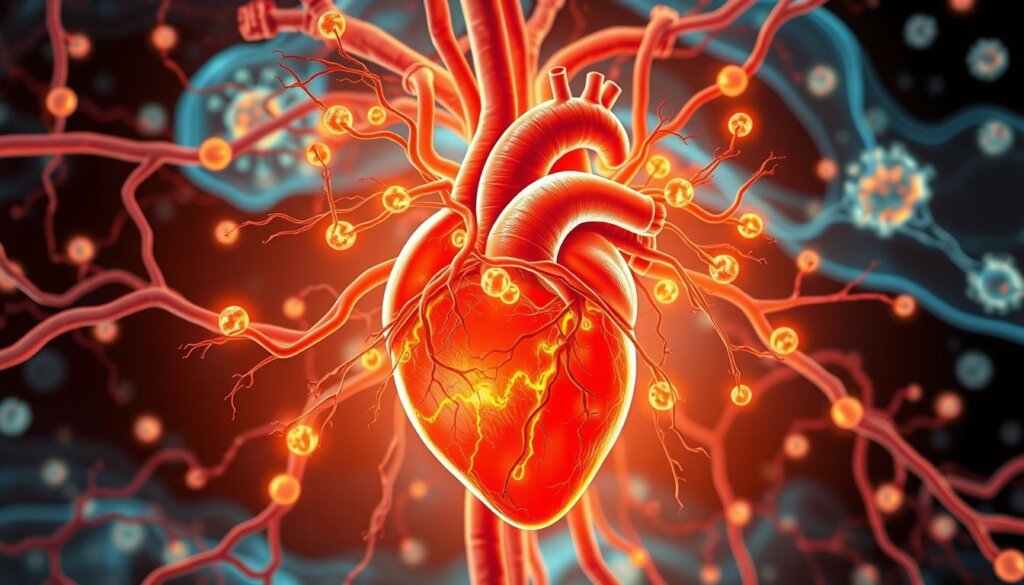
In short cardiovascular studies, endothelial function rose sharply: one report showed RHI up ~25.4% after two weeks. Improved endothelial health can aid immune cell trafficking and lower chronic vascular inflammation.
Important nuance: these are indirect supports. Better metabolic balance often correlates with reduced inflammatory tone, not a direct disease cure. Responses vary by smoking status, baseline dyslipidemia, and concentration used.
“Lower TBARS and higher SOD align with a redox state that favors normal immune function.”
| Outcome | Observed change | Clinical implication |
|---|---|---|
| Glycemic markers | ↓ fasting glucose, ↓ HbA1c | Lower metabolic stress |
| Lipid peroxidation | ↓ TBARS, ↑ SOD | Less oxidative damage to lipids |
| Endothelial function | RHI +25.4% (2 weeks) | Improved vascular signaling and cell trafficking |
Practical advice: Patients managing metabolic risk in Malaysia should consult clinicians before adding this to treatment. Use it as a complement to diet, movement, and prescribed therapies, and monitor standard labs alongside subjective wellness.
Liver and Kidney Insights: What They Reveal About Systemic Immune Stress
The liver and kidneys are reliable barometers of systemic oxidative pressure.
The liver clears toxins and manages metabolism; the kidneys filter blood and remove waste. Abnormal labs often signal ongoing oxidative stress and chronic inflammation that affect whole-body function.
Clinical data show practical organ-level effects. In chronic hepatitis B, daily intake of 1.2–1.8 L of a hydrogen-rich product improved liver enzymes, lowered HBV DNA, and reduced markers of oxidative stress. Randomized trials in NAFLD report better liver-related markers consistent with improved metabolic‑oxidative balance.
Dialysis studies used electrolyzed hydrogen solutions during hemodialysis and found lower BUN, reduced oxidative stress, and less fatigue. Patients reported better energy on dialysis and non-dialysis days when EHW was used in treatment fluids.
Why this matters: healthier liver and kidney function can lower systemic inflammatory signaling by reducing circulating damage signals and oxidative byproducts.
“Organ-level improvements suggest reduced inflammatory burden, but longer trials are needed to confirm impacts on disease progression.”
| Context | Observed change | Clinical note |
|---|---|---|
| Chronic hepatitis B | ↓ liver enzymes, ↓ HBV DNA, ↓ oxidative markers | 1.2–1.8 L/day intake |
| NAFLD | Improved liver biomarkers | Randomized double-blind trials; early data |
| Hemodialysis (EHW) | ↓ BUN, ↓ oxidative stress, ↓ fatigue | Applied during dialysis or in HD solution |
Practical advice for patients in Malaysia: people with chronic disease should discuss any adjunctive intake with their clinician. Monitor organ-specific labs and symptom scores to judge benefit, and note that drinking a product differs from using EHW in dialysis solutions—both show redox-related signals but in distinct clinical contexts.
Bottom line: organ data support the concept that improved redox balance at the liver and kidneys can lower systemic inflammatory burden, yet larger controlled studies are required to prove durable clinical endpoints such as fibrosis progression or long-term disease modification.
Safety, Dosing, and Practical Use in Daily Life
Before testing any new routine, follow simple, evidence-based steps for dose and safety. Clinical studies most often used 1.2–1.5 L/day for four weeks. Other cohorts tried 1.2–2.0 L/day across 4–12 weeks with no serious adverse events reported.
Intake ranges and what to expect
Aim for consistent intake, spread across the day. Most trial designs used daily doses for several weeks to detect subtle effects like better recovery or steadier energy.
Practical tips
- Prefer aluminum cans or fresh generation to limit gas loss; avoid long storage in glass or plastic.
- Try 1.2–1.5 L/day for at least 4 weeks before judging benefit.
- Use a steady schedule; some athletes take a dose before exercise for performance work.
Safety and who should consult a clinician
Generally recognized as safe in beverages and well tolerated in trials. Still, patients with chronic kidney or liver disease, pregnant or nursing people, those on multiple medications, or with implanted devices should consult a clinician first.
“Track simple markers — resting heart rate, sleep quality, and perceived recovery — and review bloodwork with a doctor if needed.”
| Topic | Practical note |
|---|---|
| Dose | 1.2–1.5 L/day commonly used |
| Duration | At least 4 weeks to assess change |
| Storage | Aluminum or fresh generation preserves content |
For Malaysia-based guidance on formats and routines, WhatsApp Wellness Group at +60123822655 (Mon–Fri 9:30 am–6:30 pm; Sat–Sun 10 am–5 pm).
Hydrogen Water vs. Hydrogen Gas Inhalation: What’s Relevant for Immunity?
Delivery route matters: lungs, gut, and blood see different peaks and durations when gas is given versus taken by mouth.
What this guide focuses on: it highlights drinking because human randomized trials on daily intake underpin the immune-marker findings readers value.
How modalities differ: inhalation sends gas through the lungs and can produce higher short-term systemic levels. That approach often needs equipment, trained staff, or a home device and clinical protocols.
By contrast, oral intake is portable and simple. Consumers in Malaysia and elsewhere prefer it for routine use because it fits daily life and matches the RCT designs that tracked antioxidant and inflammatory markers over weeks.
- Clinical use: inhalation shows anti-inflammatory and antioxidant effects in acute and respiratory settings, including adjunctive COVID-19 reports.
- Practical use: drinking suits long-term wellness and field studies; it requires no special training.
- Research limits: cross-comparison is hard because doses, durations, and populations differ across study models.
“For everyday balance, water-based intake currently offers the clearest human data; inhalation remains a clinical or investigational option.”
| Modality | Typical context | Pros |
|---|---|---|
| Inhalation | Clinic or device-based therapy | Rapid systemic peak; used in acute care |
| Oral intake | Daily wellness studies and consumer use | Portable, user-friendly, supported by RCTs |
Safety note: people with medical conditions should consult clinicians before considering inhalation therapy. For routine immune balance, drinking remains the practical option supported by current human data.
Limitations, Gaps, and What Future Research Needs to Prove
Most human studies so far are pilot in scale, leaving key questions about dose, duration, and reproducibility unanswered.
Main limits: sample sizes are small and follow-ups short. That restricts the strength of any conclusions from current data.
Standardization is needed for dose (ppm and daily volume), storage, and delivery reporting so results can be reproduced across labs and clinics.
“Careful, multicenter trials with clear device specs will settle whether early marker shifts translate to meaningful clinical outcomes.”
- Measure gene expression and circulating cytokine proteins together, plus clinical endpoints such as infection rates or vaccine responses.
- Include diverse populations: older adults, people with metabolic risk, and varied baseline oxidative loads.
- Run longer follow-ups to test if initial reductions in cellular stress persist or lead to fewer illnesses.
- Compare oral products versus electrolyzed solutions head-to-head, noting alkalinity and possible electrode byproducts.
- Embed mechanistic sub-studies on the microbiome, redox signaling, and immune cell phenotypes to refine the working model.
| Gap | Why it matters | Needed action |
|---|---|---|
| Small samples & short duration | Limits statistical power and generalizability | Large, longer randomized trials |
| Variable dosing & reporting | Hinders reproducibility across studies | Standardize ppm, volume, storage, and device specs |
| Limited outcome types | Gene transcripts alone don’t prove clinical benefit | Measure proteins, clinical events, and functional endpoints |
Practical note for Malaysia: independent verification of device claims and concentration over time will help consumers and clinicians in choosing trusted products.
Conclusion: Rigorous, multicenter research with transparent methods will determine the true scope and durability of any observed effects.
Wellness Group in Malaysia: Speak to a Specialist Today
Wellness Group in Malaysia helps readers convert study findings into safe, practical routines. The team advises on product formats, aligns daily intake with evidence-informed ranges (commonly ~1.5 L/day over four weeks), and supports patients who need clinical coordination.
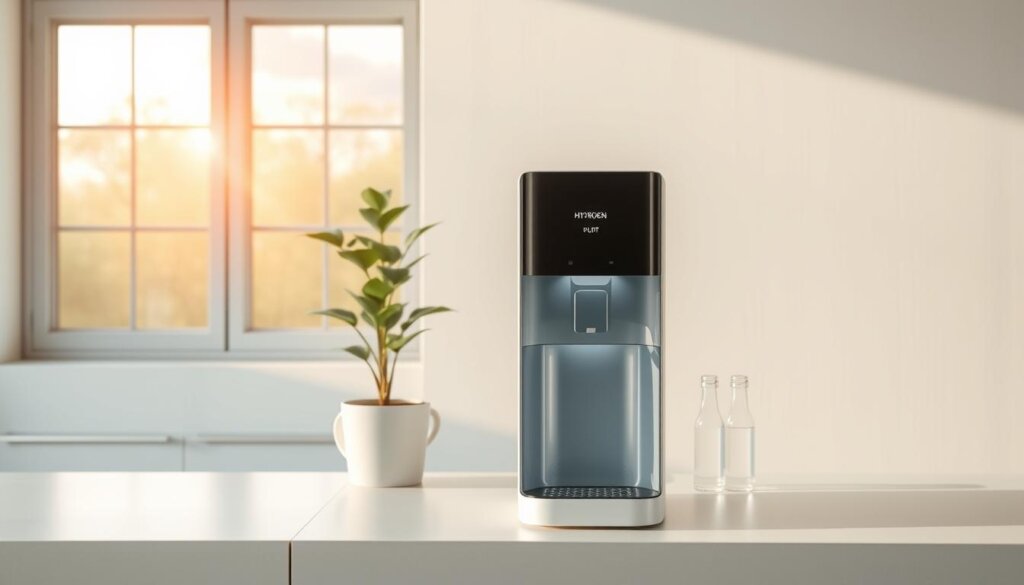
Contact and WhatsApp: +60123822655
Message the specialists on WhatsApp for quick, personalized suggestions about generators, canned products, or tablets.
Business hours
Monday–Friday 9:30 am–6:30 pm; Saturday–Sunday 10 am–5 pm.
What the team can do: choose reliable hydrogen-rich water formats, set an intake plan over several weeks, and suggest safe use for patients on medications. They also give tips on storage, timing, and pairing intake with sleep, nutrition, and activity.
“Small-group consultations and family plans help embed healthy hydration habits at home.”
| Service | How it helps | When to consult |
|---|---|---|
| Product selection | Match device specs to study ranges and longevity | Before first purchase |
| Intake planning | Evidence-informed schedules for several weeks | When testing for benefits |
| Patient support | Coordinate use with clinical care and labs | Chronic conditions or pregnancy |
Next step: Reach out to Wellness Group at +60123822655 for a friendly consultation. The team welcomes questions from first-time buyers and experienced users who want to optimize their setup.
Conclusion
Conclusion: Summing up the evidence points to modest, measurable changes in redox balance that may support resilience.
The most robust randomized trial found four weeks of 1.5 L/day of a hydrogen-rich product raised antioxidant capacity, reduced PBMC apoptosis, and downregulated TLR–NF‑κB transcripts. These are supportive marker shifts consistent with lower oxidative stress and milder inflammatory signaling.
Such effects span recovery, metabolic and organ markers, and vascular measures, yet larger trials are required. Readers in Malaysia should test a steady routine, mind storage and delivery, and pair intake with sleep, diet, and exercise.
Not a medical treatment: anyone with health conditions should consult a clinician. For tailored advice on devices, dosing, and daily plans, WhatsApp Wellness Group at +60123822655 (Mon–Fri 9:30–18:30; Sat–Sun 10:00–17:00).
Thank you for reading this evidence-first article. Track simple wellness signals for a month to judge personal effects and proceed with cautious optimism about the potential benefits.
FAQ
What is hydrogen-rich water and how is it different from electrolyzed hydrogen water?
Hydrogen-rich water contains dissolved molecular hydrogen gas (H2). Electrolyzed hydrogen water (EHW) is produced by electrolysis, which raises dissolved H2 and changes pH and redox potential. Both deliver H2, but EHW may also alter mineral forms and alkalinity. Choice depends on preferred delivery—tablets, generators, or pre-bottled sources.
How might molecular hydrogen influence oxidative stress and immune signaling?
Molecular hydrogen can act as a selective reductant for certain reactive oxygen species and influence redox-sensitive signaling. Animal and cell studies show H2 may modulate ROS-driven inflammation, NF-κB and TLR pathways, and cytokine expression, which could lower excessive immune activation without broadly suppressing defenses.
Are there human trials showing immune benefits from drinking hydrogen-rich beverages?
A handful of clinical trials report modest changes: improved antioxidant markers, altered peripheral blood mononuclear cell apoptosis, and shifts in CD14+ cell profiles. Transcriptomic analyses in some studies indicate downregulation of inflammatory networks, but effects vary by population and study design.
How much dissolved gas is typically used in studies, and how long before effects appear?
Studies commonly use concentrations from ~0.5 to 1.6 ppm H2 in drinking solutions or continuous low-dose inhalation. Reported biological changes have appeared after days to weeks of regular intake, though acute antioxidant effects have been observed after single doses in exercise or stress models.
Can hydrogen-rich beverages reduce production of proinflammatory cytokines like IL-6 or TNF-α?
Several trials and animal studies report reductions in IL-1β, IL-6, and TNF-α under specific stress or disease conditions. Results are inconsistent across studies, and reductions are generally modest. More large, well-controlled human trials are needed to confirm clinically meaningful cytokine modulation.
Is there evidence that using hydrogen-rich drinks improves recovery after exercise and supports immune resilience?
Some athletic studies show faster recovery markers and lower oxidative stress with H2 intake, which could indirectly support immune function by reducing exercise-induced inflammation. Findings depend on dose, timing, and athlete population.
How does drinking H2 compare to inhaling hydrogen gas for immune effects?
Inhalation can deliver higher systemic exposure quickly and is common in clinical or experimental settings. Oral intake is simpler and safe for daily use but yields lower peak concentrations. Both routes have shown anti-inflammatory and antioxidant actions in models, but direct comparisons in humans are limited.
Are there safety concerns or known side effects from regular intake?
Short- and medium-term studies report good tolerability with few adverse events. H2 is nonreactive at low concentrations used in supplements. People with serious illness, pregnancy, or on immunomodulatory drugs should consult a clinician before starting any new supplement.
Who might benefit most from trying hydrogen-rich beverages?
Individuals interested in adjunctive antioxidant or anti-inflammatory approaches—such as athletes, people under mild chronic oxidative stress, or those seeking general wellness—may see benefit. It should not replace medical treatments for infections, autoimmune disease, or cancer.
What are the main limitations of current research?
Limitations include small sample sizes, heterogeneity in H2 dose and delivery, short follow-up, and variable endpoints. Many mechanistic insights come from animal models and in vitro work, so translating effects to broad clinical recommendations requires larger RCTs.
How should consumers choose tablets, generators, or bottled products?
Look for products that report dissolved H2 concentration, stability data, and third-party testing. Tablets and generators allow on-demand H2 production; bottled options vary in shelf stability. Practicality, verified concentration, and reputable vendors matter most.
Could regular intake reduce long-term disease risk such as metabolic or cardiovascular conditions?
Preliminary human and animal studies suggest potential indirect benefits through reduced oxidative stress and inflammation, which are factors in metabolic and cardiovascular disease. However, evidence is not yet strong enough to claim risk reduction; lifestyle and medical interventions remain primary.
Where can someone in Malaysia get more personalized advice or purchase guidance?
Wellness clinics and specialist providers can offer tailored guidance. For direct contact, Wellness Group in Malaysia lists WhatsApp +60123822655 and business hours Mon–Fri 9:30 am–6:30 pm, Sat–Sun 10 am–5 pm for consultations.

Khloe Tan
Khloe Tan is a Certified Nutritionist, Corporate Wellness Trainer, and Holistic Health Specialist with over 15 years of experience in the health and wellness industry. She has delivered more than 100 talks nationwide, inspiring and educating diverse audiences on nutrition, lifestyle, and sustainable wellness. Her work has positively impacted over 3,000 lives, and she continues to champion holistic approaches to well-being in both corporate and personal settings.

